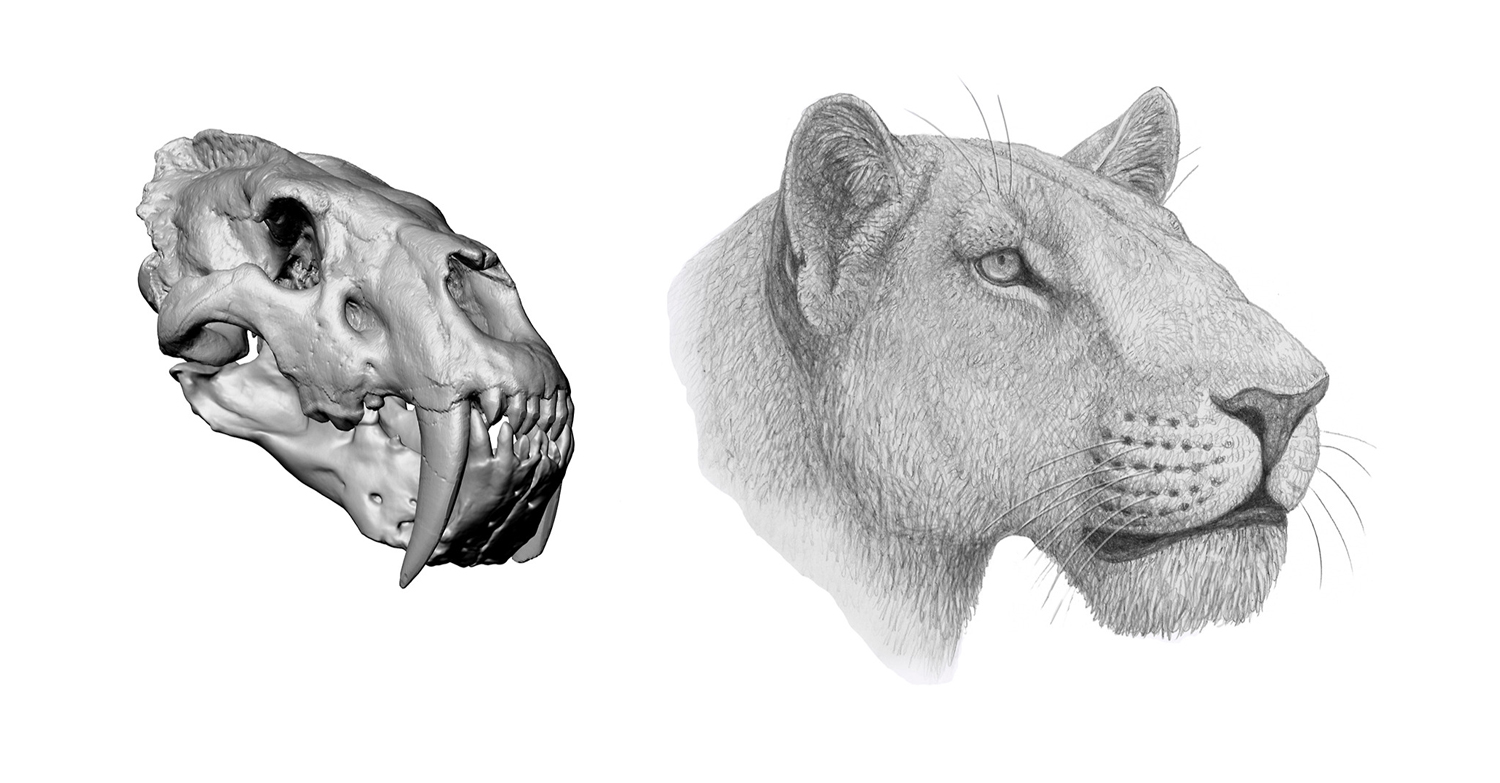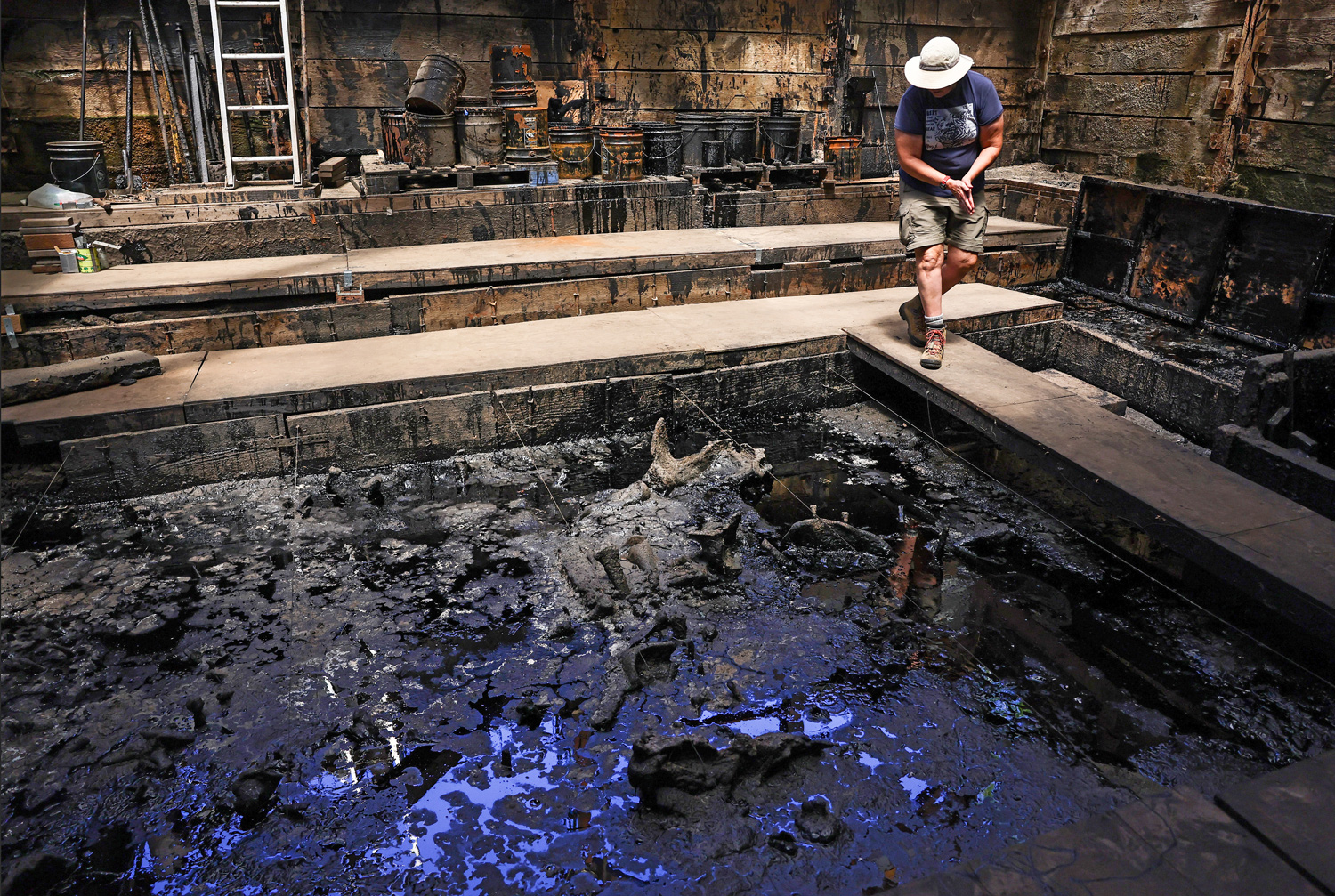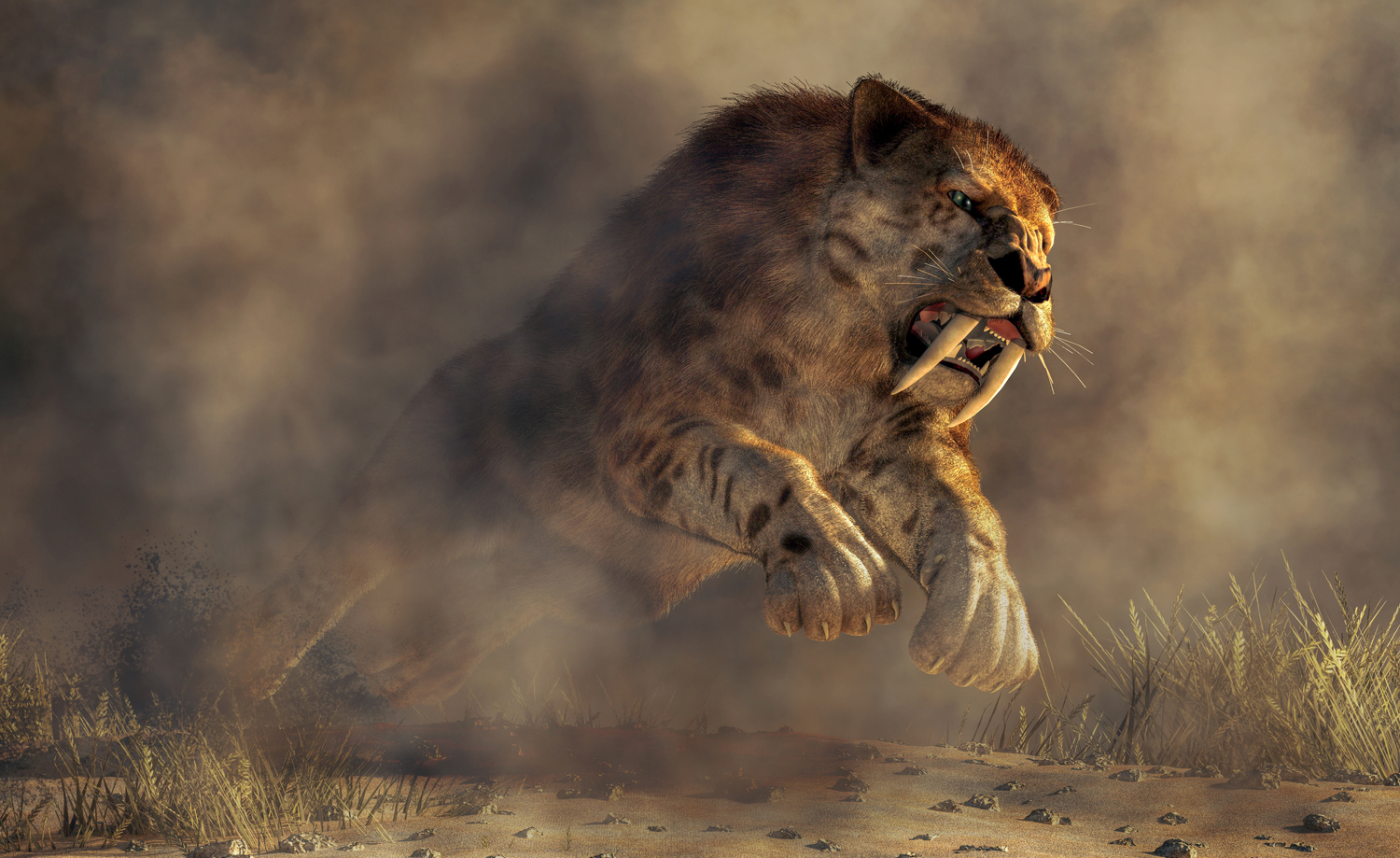Saber-Toothed Mummy!
A saber-toothed cub died about 35,000 years ago, but its body is amazingly well preserved.
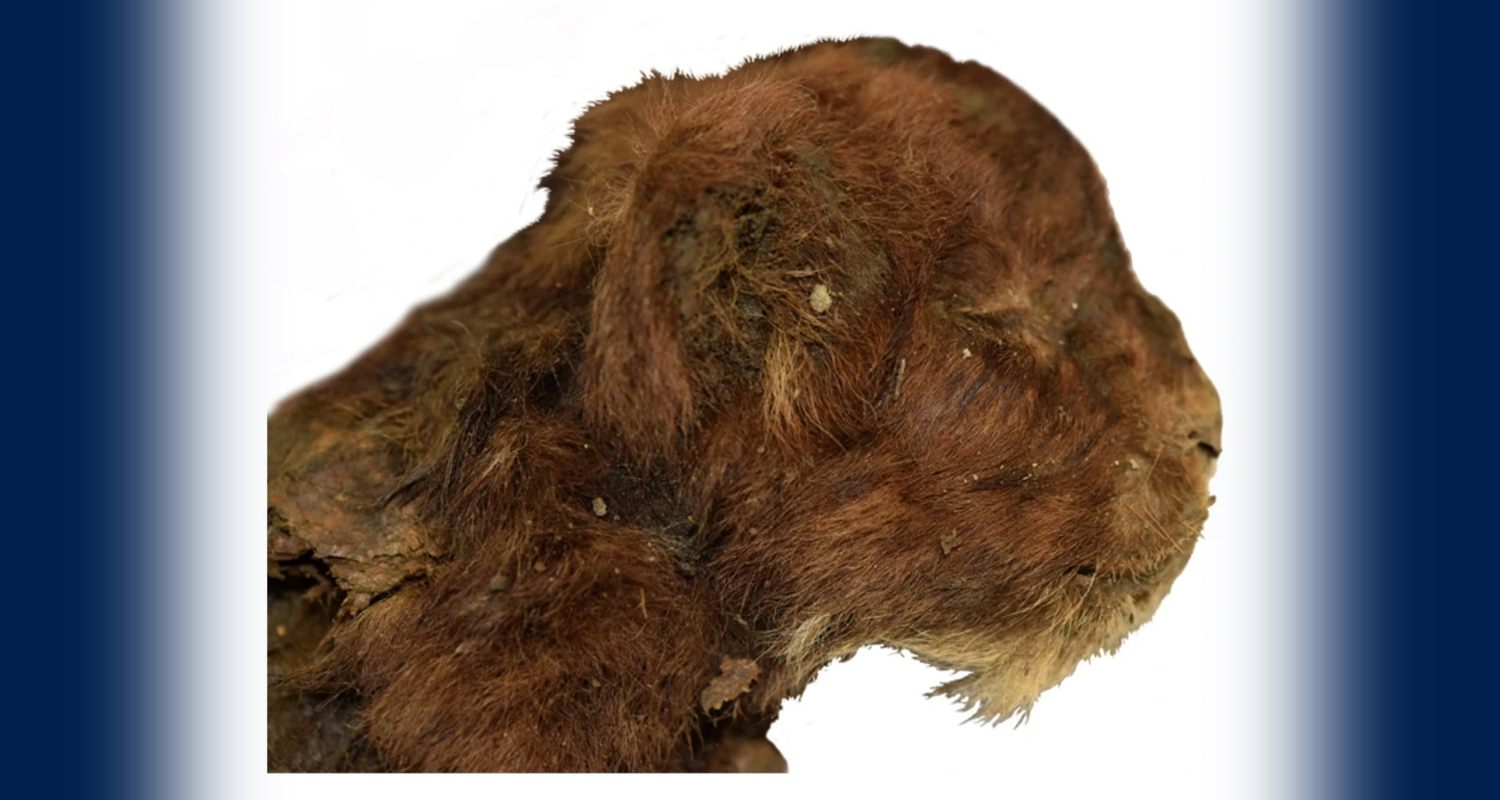
Lopatin, A.V., Sotnikova, M.V., Klimovsky, A.I. et al. Mummy of a juvenile sabre-toothed cat Homotherium latidens from the Upper Pleistocene of Siberia. Sci Rep 14, 28016 (2024). https://doi.org/10.1038/s41598-024-79546-1
This saber-toothed cub died at least 35,000 years ago, but the ice preserved most of its body.
Saber-toothed cats are best known for their giant canine teeth. But what did they really look like? A newly discovered mummy of a saber-toothed cub is providing some answers.
The cub, which was found in 2020 in Siberia, Russia, died at least 35,000 years ago of unknown causes. It was about three weeks old. The cub’s body was well preserved because it was in a layer of permanently frozen ground called permafrost. Its face, neck, and front legs, as well as part of its torso, are all in excellent condition, and so is its dark brown fur. Amazingly, it still has whiskers and claws.
“It’s a fantastic feeling to see with your own eyes the life appearance of a long-extinct animal,” researcher Alexey V. Lopatin told CNN. “Especially when it comes to such an interesting predator as the saber-toothed cat.”
The cub was of a species called Homotherium latidens. There were several varieties of saber-toothed cats, including Homotherium and Smilodon. They all had enormous upper canine teeth that, for Smilodon, could reach 8 inches (20 centimeters) in length. (Homotherium teeth were closer to 3 inches in length.) Not surprisingly, these big-toothed big cats were carnivores (meat eaters). All varieties of saber-toothed cats were extinct by about 10,000 years ago.
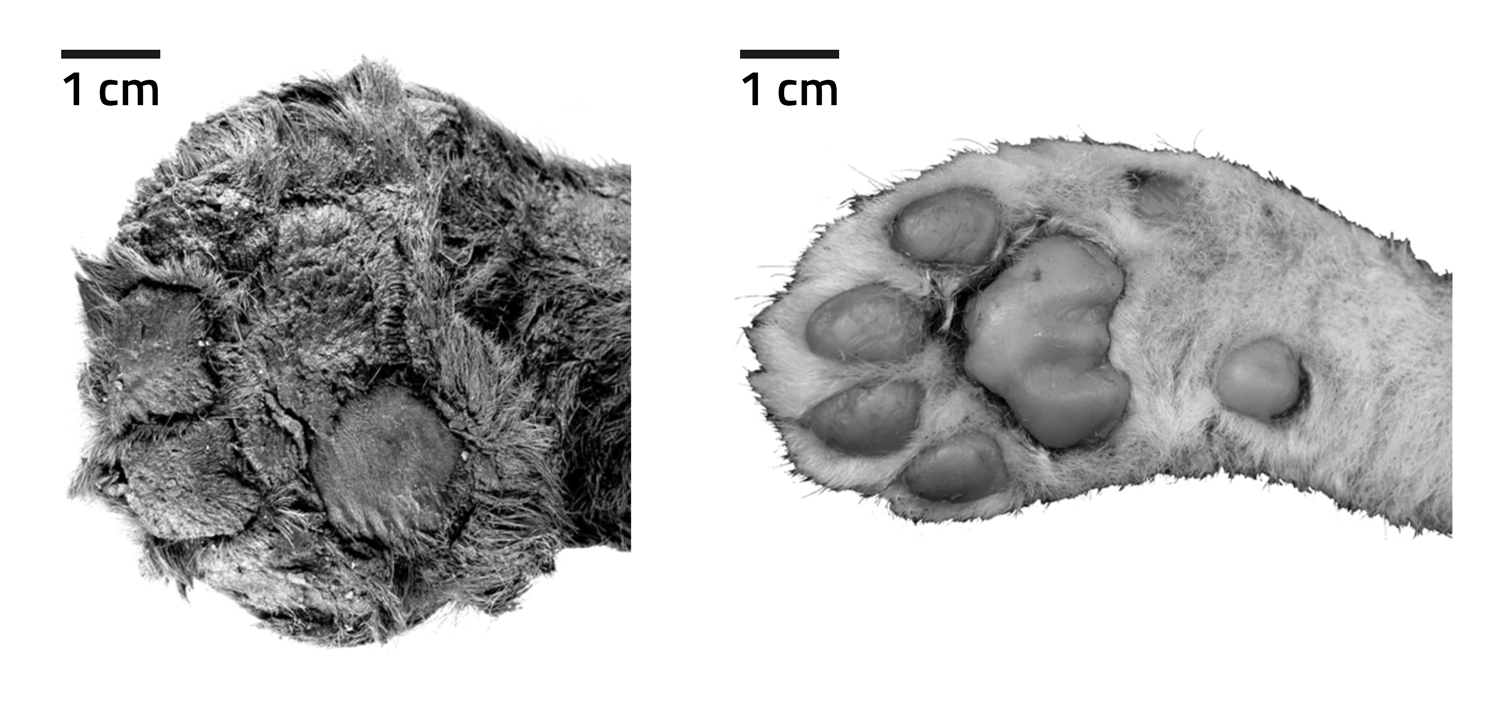
Lopatin, A.V., Sotnikova, M.V., Klimovsky, A.I. et al. Mummy of a juvenile sabre-toothed cat Homotherium latidens from the Upper Pleistocene of Siberia. Sci Rep 14, 28016 (2024). https://doi.org/10.1038/s41598-024-79546-1
The image on the left shows the paw of Homotherium latidens, a saber-toothed cat. The image on the right shows the paw of a modern lion.
Since saber-toothed cats no longer exist, scientists have had to use fossils to try to figure out what they looked like. But the mummy is helping to paint a clearer picture. For example, scientists are learning the locations of the animal’s muscles. From this, they can learn more about how saber-toothed cats hunted their prey.
Saber-toothed cats are related to today’s big cats, like lions and tigers—but there are many differences. Scientists compared the mummified cub with modern lion cubs and noted some of these distinctions. The saber-toothed cat mummy had darker fur, smaller ears, and a larger mouth than a lion cub. Its paws were wider and rounder.
Paleontologist Jack Tseng, who was not part of the team that studied the mummy, is excited about the possibilities for learning from this mummy. Tseng told CNN that he’s amazed when he thinks about “the treasure trove of information that could come out of this singular discovery.”

